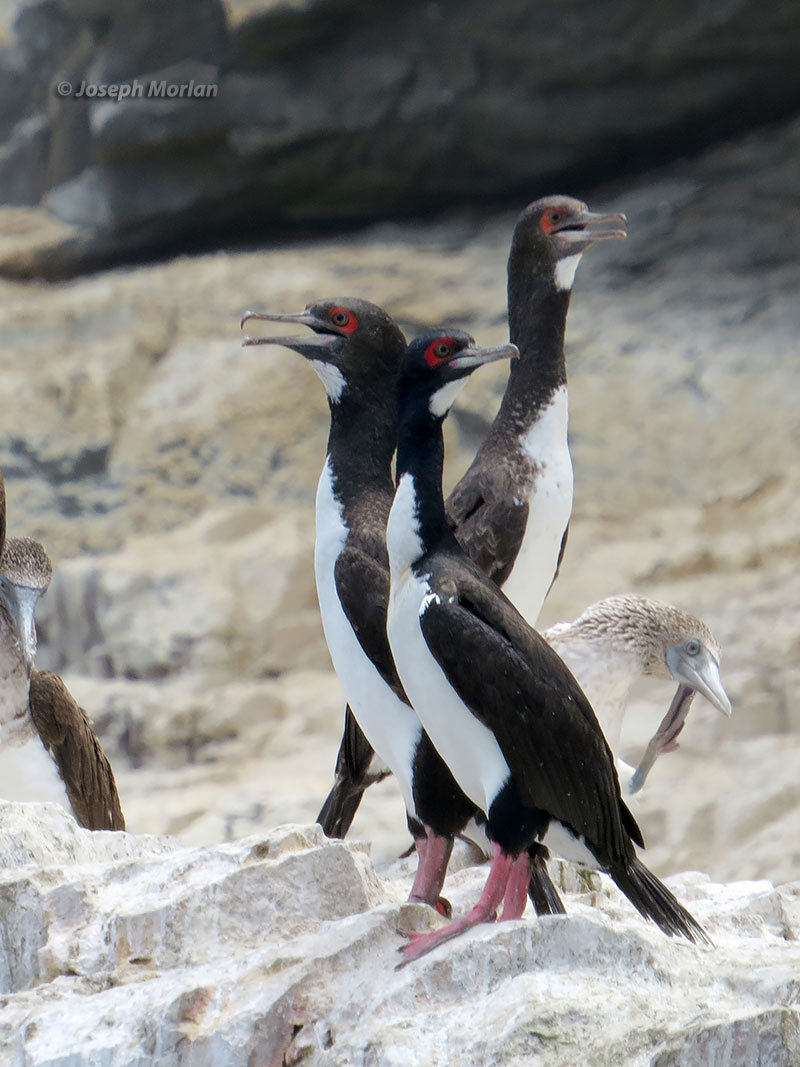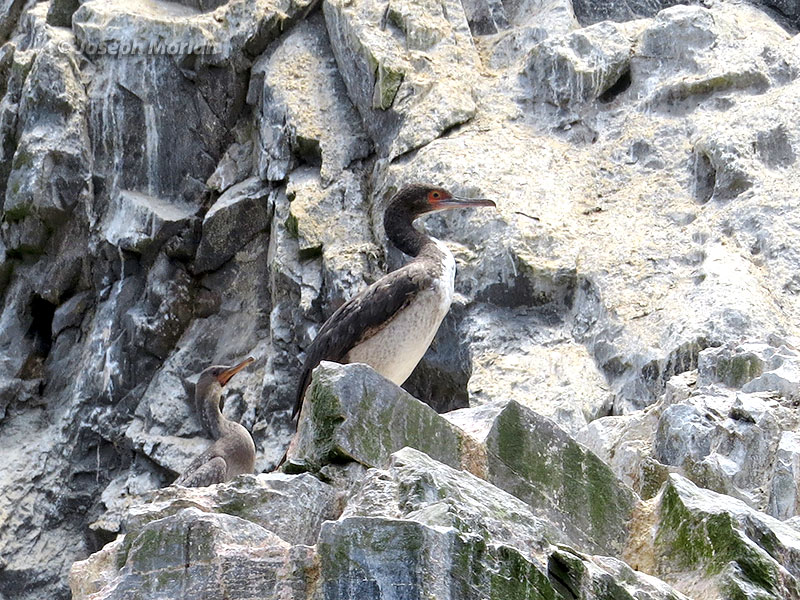

The white throat patches seen here are usually not noticeable from a distance. Also distinctive is how the white on the foreneck comes to a point at the top. The Guanay Cormorant remains a significant producer of commercially harvested guano used for fertilizer. Although locally abundant, IUCN lists this species as "near threatened" because they have suffered significant declines in recent times. Main threats are over-fishing and exploitation. The other two birds in the top photo are Blue-footed Boobies. Some authorities (HBW, HM4) pluralize the scientific name as P. bougainvilliorum because the bird was named in honor of two people, father and son. Canon PowerShot SX50 HS.
References:
Baran, Mark A. and Michael G. Harvey. 2011. Guanay Cormorant (Phalacrocorax bougainvillii), version 1.0. In Neotropical Birds Online (T. S. Schulenberg, editor). Cornell Lab of Ornithology, Ithaca, New York, USA. https://doi.org/10.2173/nb.guacor1.01
BirdLife International. 2016. Larosterna inca. The IUCN Red List of Threatened Species 2016: e.T22694834A93471847. http://dx.doi.org/10.2305/IUCN.UK.2016-3.RLTS.T22694834A93471847.en. Downloaded on 18 January 2018.
Dickinson, E.C. & Remsen, J.V. eds. (2013) The Howard and Moore Complete Checklist of the Birds of the World. 4th edition. Vol. 1. Non-passerines. Aves Press, Eastbourne, UK.
Orta, J., Jutglar, F., Garcia, E.F.J. & Boesman, P. (2018). Guanay Cormorant (Phalacrocorax bougainvilliorum). In: del Hoyo, J., Elliott, A., Sargatal, J., Christie, D.A. & de Juana, E. (eds.). Handbook of the Birds of the World Alive. Lynx Edicions, Barcelona. (retrieved from https://www.hbw.com/node/52640 on 19 January 2018).